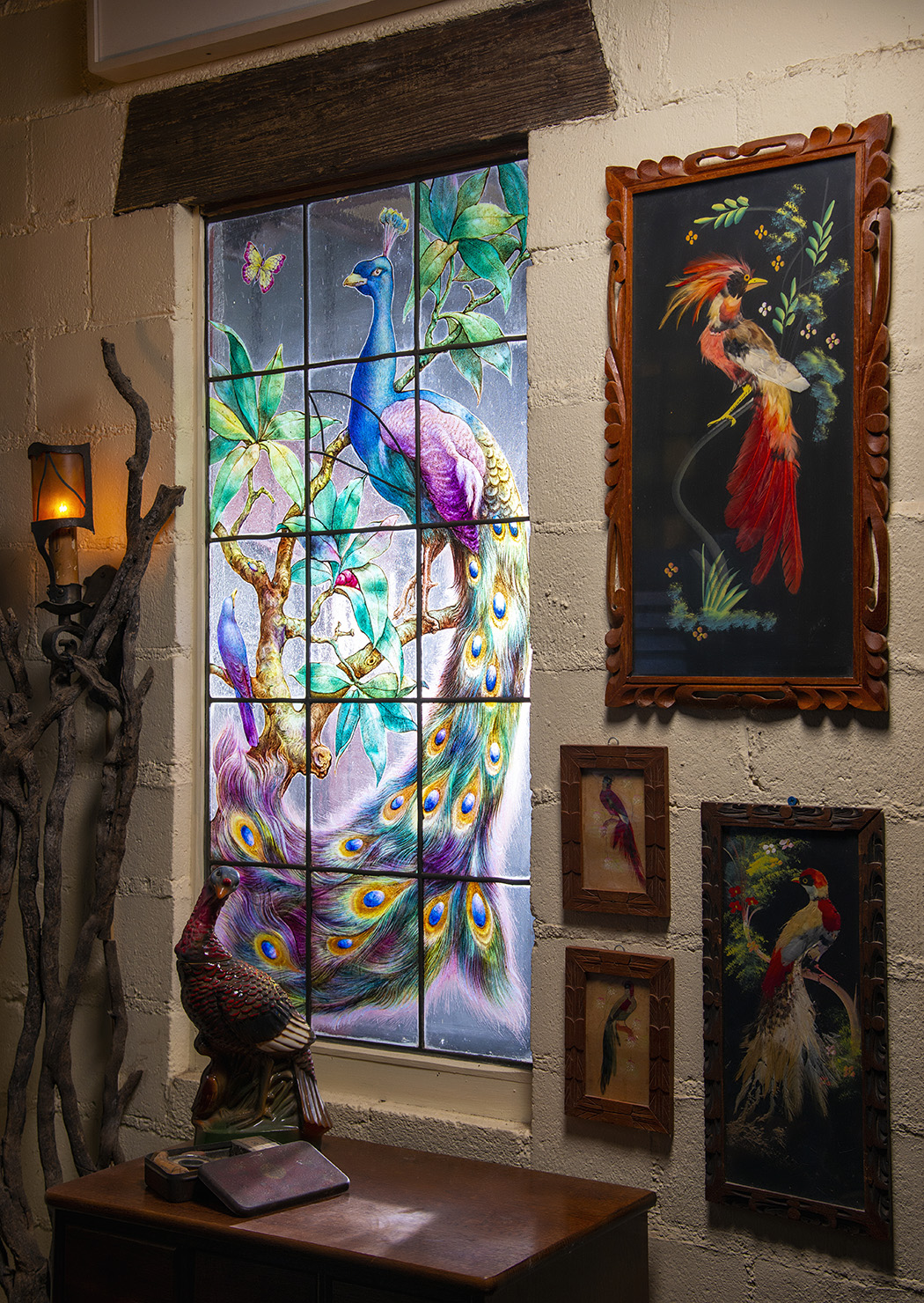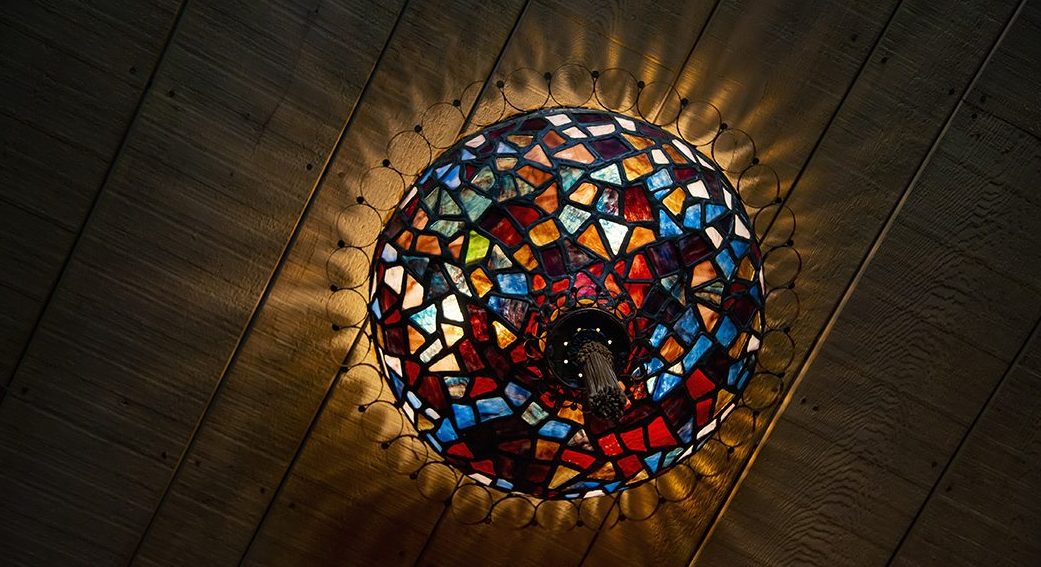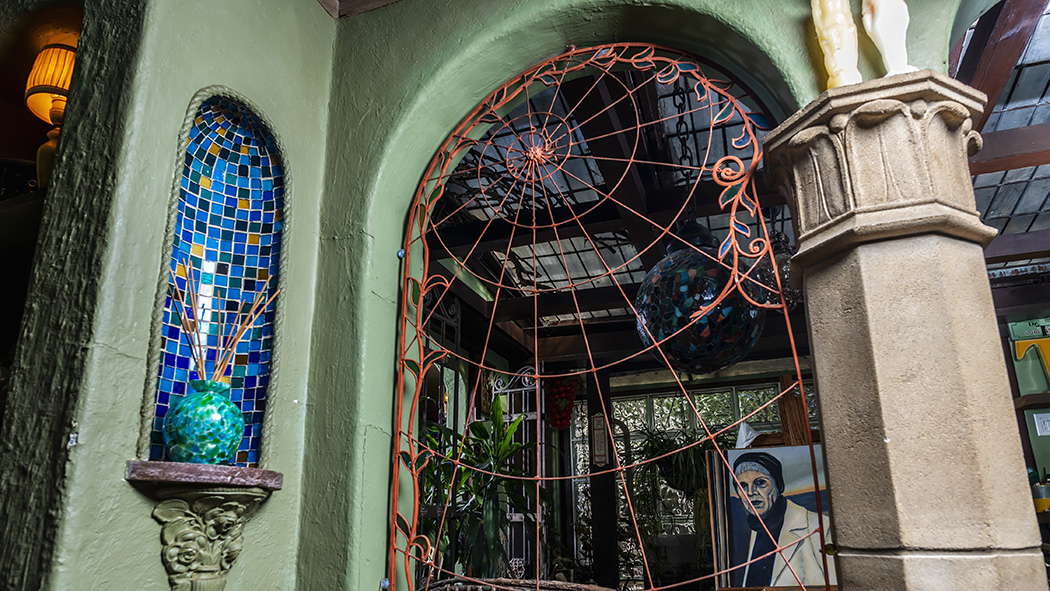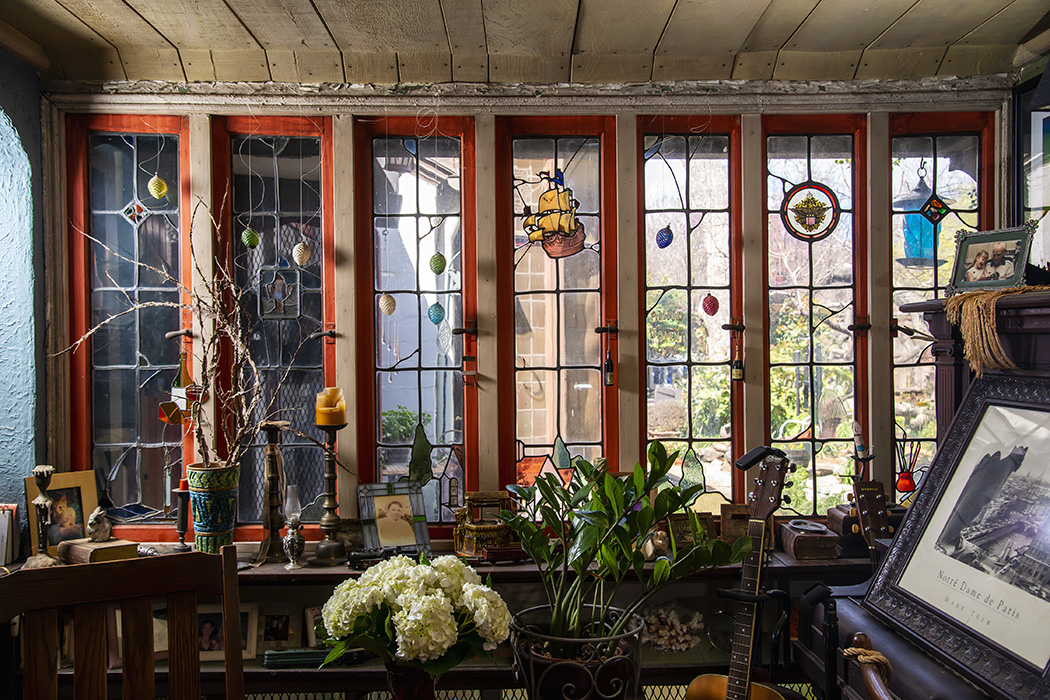
Photography by Danny Fulgencio.
The home at 1518 Abrams Road may be called “The Shack,” but it’s not your typical shanty made with broken wood boards and a corrugated metal roof. The residence is a work of art lovingly created over decades by stained glass artists Roger McIntosh and his wife, Georgia.
Although subsequent owners have added their own touches to the 100-year-old house, every handmade window, mirror, lamp and light fixture that remain are a testament to the man who made the quirky cottage his home.
The current caretaker is Terri Raith, a real estate agent who bought the two-bedroom house in 2004 after seeing it on a Preservation Dallas tour. She spent 15 years restoring it, and her efforts earned her a Preservation Dallas award in 2019.
“It’s a work of art that needed saving,” Raith says. “The only way to save it was to buy it and do it. It’s taken everything I’ve had for 15 years.”
The Shack started in 1918 as a two-story garage, consisting of a two-bedroom apartment with no plumbing located above a double garage with dirt floors. It was owned by the Lipscomb family, who planned to build a proper residence on the property. Several years after patriarch William Lipscomb died in a church shooting, his widow sold the lot to McIntosh’s mother in 1922. A few years later, she “sold” it to her son for $10.
McIntosh nicknamed the building “The Shack” and began renovations. The first task was pouring concrete over the dirt floors to create a downstairs workshop and living room. The living room contains one of the home’s first pieces of stained glass — a casement window adorned with various motifs, such as a gnome, ship and eagle.
McIntosh pieces can be seen throughout Dallas — at the Adolphus Hotel, the Dallas Power and Light buildings and Munger Place Church — as well as in his home. In the kitchen, there’s a colorful panel of a chicken with her eggs, and in the sitting room, Sir Galahad kneels before an angel with a silver chalice.
McIntosh poured his creative energy into the house. In addition to creating stained glass, he made a metal sculpture of a spider spinning its web in an empty archway. He also carved and fitted almost every piece of wood — from cabinets and shelves to bookcases — in the home.
The artist set up his atelier in a space off the living room. Raith still has some of his drills, saws and other tools hanging from wall hooks, along with her own belongings. The former set decorator has adorned the home’s many niches and nooks with family heirlooms, a collection of glass tomato dishes, mementos from “Walker, Texas Ranger” and a small Donald Trump cat toy filled with pushpins.
“I didn’t want the Roger McIntosh museum,” Raith says. “I wanted some of his pieces, but I have my own stuff.”
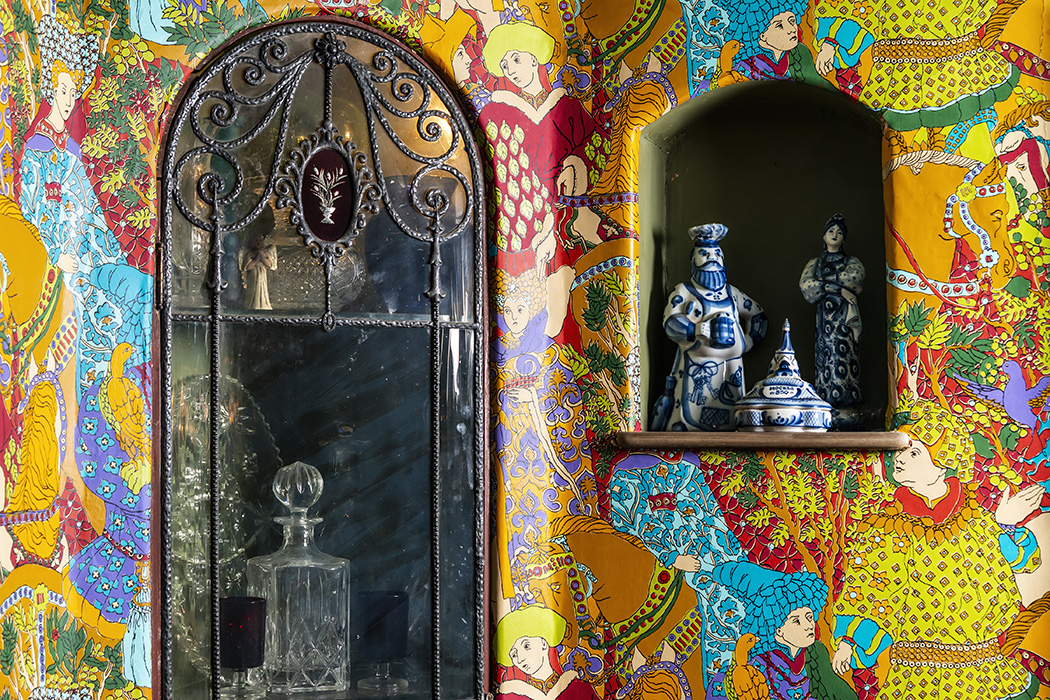
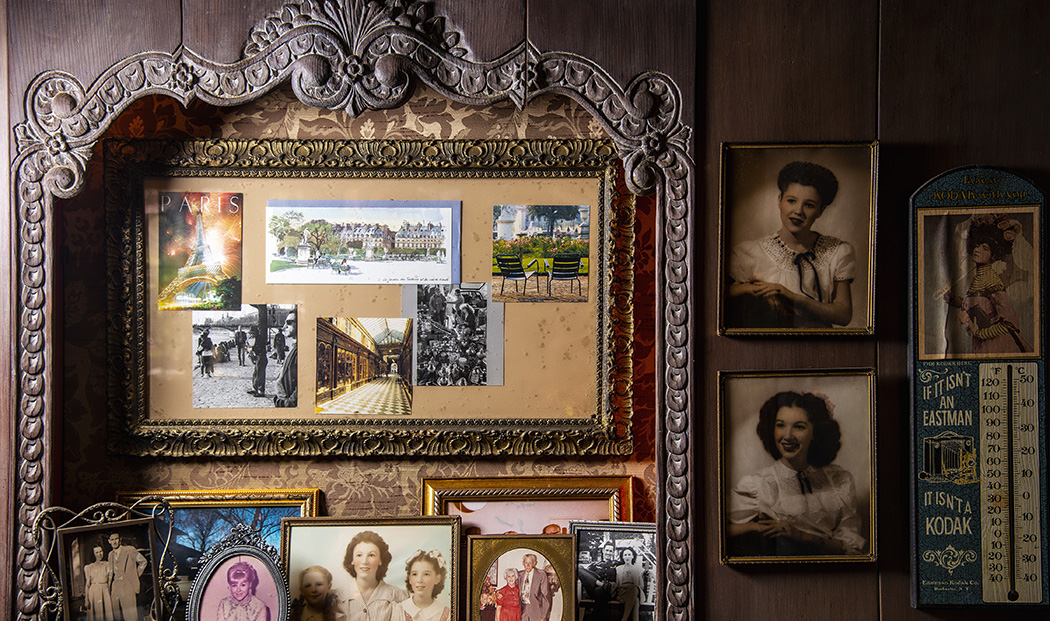
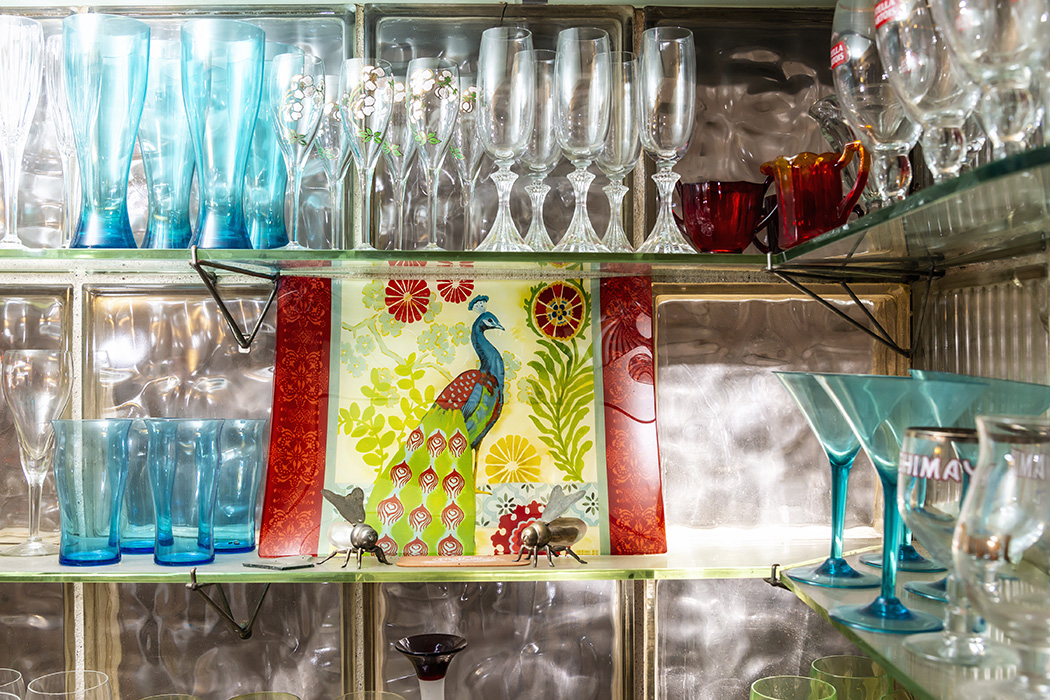
McIntosh never found an item that couldn’t be reused in his home. Empty fruit cans became light fixtures, and old cobblestones from Ross Avenue paved the patio floor. Likewise, Raith has filled the house with scavenged items. For 40 years, she hoarded two half rolls of wallpaper until she found the perfect place to display the psychedelic print.
Raith has made the house her home while staying true to McIntosh’s vision. When a hailstorm destroyed a skylight in the kitchen and drenched the countertops, causing them to rupture, she replaced them with marble that matched the original floor in the solarium.
“Anytime I do anything, I think, ‘What would Roger and Georgia do?’” Raith says. “It’s always a guesstimation.”
Besides replacing rotting cabinets and restoring features damaged in storms, the only room Raith has remodeled is a downstairs closet, which is now a wet room with a shower and original bathtub. She also added a penny floor, made with $110 worth of pennies, in the kitchen. She doesn’t think McIntosh would mind the unusual addition. Anywhere the artist had a chance to embellish, he did.
The master bedroom and bathroom are upstairs, overlooking a large garden that separates the residence from the busy boulevard.
Generations of additions have been cobbled together to form the home’s exterior, which is almost unrecognizable from its original shape. But there’s no mistaking “The Shack.” McIntosh engraved the beloved nickname into a glass medallion on the front door.
“It’s a fun house,” Raith says. “I have curated chaos. Everything has a story behind it.”


